If an animal is sentient, we have an ethical obligation to consider its welfare. But, when it comes to invertebrate animals, there is no consensus about whether they are sentient. What can the scientific evidence tell us? And what does it mean for animal welfare policy? Andrew Crump discusses the implications of animal sentience on policy making.
The Significance of Sentience
Imagine two entities: a pebble and a poodle. Now imagine I leave both in the back of a hot car. Presumably you’d worry about the welfare of one of these entities (the poodle) and not the other (the pebble), even if the hot car damaged both. But why? In other words, when we talk about animal welfare, why restrict our moral concern to animals? Why not plants, bacteria, or pebbles?
The answer, I think, is that we generally consider animals to be sentient. Sentience is the capacity to have feelings: positive or negative mental states like pain, pleasure, anger, excitement, and fear. The poodle is almost certainly sentient, whereas the pebble almost certainly isn’t. Leaving the poodle in a hot car feels bad from the poodle’s perspective. The poodle can experience pain and suffering; the pebble cannot.
This raises another question: are all animals sentient? Animal welfare ethics, science, and policy overwhelmingly focus on vertebrate animals. For example, primates in labs; cows, pigs, and chickens on farms; and dogs and cats in our homes. There is a broad scientific consensus that these mammals and birds are sentient, and that we should at least consider their welfare.
But 95% of animal species are invertebrates, including groups like the cephalopod molluscs (octopus, squid, and cuttlefish), decapod crustaceans (crabs, lobsters, and shrimp), and insects. These unnoticed, hyper-numerous animals face substantial welfare issues. Octopuses may be asphyxiated or beaten to death; lobsters can be boiled alive; and beetles are slowly dissolved using pesticides[1]. Do invertebrates suffer as a result, or are these harms equivalent to leaving a pebble in a hot car?
This isn’t just an academic question. When drafting animal welfare law, legislators must decide which animals to protect. The UK’s Animal Welfare (Sentience) Act 2022, for example, originally defined “animal” as any vertebrate besides humans. This would have meant that no invertebrates were recognised as sentient.
On the LSE’s Foundations of Animal Sentience Project, we’re tackling big questions like which animals are sentient, and how should we treat sentient animals? Here, I’ll summarise the evidence for sentience in cephalopods, decapods, and insects, and discuss the legal implications for their welfare.
Why is Sentience Difficult to Study?
The question of invertebrate sentience is tough to answer. Feelings like pain are inherently private experiences. Moreover, pain can be distinguished from nociception: the processing of harmful stimuli, which may lead to reflexive responses. Scientists have long known that invertebrates display nociception. However, if an animal detects and responds to potentially damaging stimuli, it is not necessarily an indicator of pain.
Nociception and pain can happen, to some extent, independently of each other. If you touch a hot stove, for instance, you’ll pull your hand away and feel a painful burn. But you pull your hand away before you feel the burn. Nerve signals from your hand travel to the spinal cord, where they take two separate pathways[2]. The first pathway is back to the arm muscles, causing you to withdraw your hand. The second pathway is to the brain, where pain is felt. So hand withdrawal is a nociceptive reflex, which doesn’t require pain.
This difficulty of diagnosing pain in non-verbal beings is illustrated by the relatively recent treatment of babies during surgery. Into the 1980s, many surgeons believed babies could not feel pain and rarely used anaesthetics. They thought babies’ obvious responses, such as screaming and writhing, were “just reflexes”[3]. Even though we still can’t prove babies feel pain, most now accept they do with near certainty.
For any being that cannot talk about its feelings, we need to rely on common sense and probability. The more sentience indicators found, the higher the probability of sentience. It’s important to use consistent criteria across animals, and to look for similar sentience indicators across invertebrates and vertebrates.
How to Evaluate Evidence for Sentience
In 2020, the UK government asked my colleagues and I to assess the evidence for sentience in cephalopod molluscs and decapod crustaceans. They wanted to know whether animal welfare legislation should cover these invertebrates.
How can we find out if an animal is sentient? It’s tempting to think we only need to look at whether they try to avoid or escape being injured. However, as discussed above, other animals might only respond reflexively to injury, without experiencing pain.
For our investigation, we used eight scientific criteria for determining sentience. The first four addressed whether the animal’s nervous system could support sentience. We wanted to find out whether it could detect harmful stimuli and transmit those signals to the brain. And, also, whether the signals were processed in integrative brain regions: parts of the brain that bring together information from many sources. Finally, it was important to understand whether anaesthetics or painkillers changed the nervous system response.
Our four remaining criteria focused on the animal’s behaviour. Could it trade-off risks of injury against opportunities for a reward? Did individuals tend to the specific site of an injury, and could they learn to avoid stimuli associated with injury? We also investigated whether they valued anaesthetics or painkillers when injured. These behaviours distinguish rigid and reflexive reactions to injury, such as withdrawing a burnt hand, from flexible responses, so they are taken as evidence of pain.
Individually, no criterion can prove an animal is sentient. None is a smoking gun. But, the more criteria an animal meets, the more likely sentience becomes.
Using this framework, we produced a comprehensive report on cephalopod and decapod sentience, which reviewed over 300 scientific studies[4][5][6]. We followed this up with a paper evaluating the evidence for sentience in insects[7]. The results were startling.
Evidence for Sentience in Invertebrates
We found the strongest evidence for sentience in cephalopods. Octopuses were the stars. With around 170 million brain cells, they have higher brain-to-body ratios than most reptiles and fish. This allows octopuses to perform remarkable feats of learning and memory.
Octopuses also behave in ways that point to experiences of pain. For example, in a recent study, they were given three chambers to explore[8]. Injection with acetic acid in their initially preferred chamber led to octopuses subsequently avoiding that chamber. Injured octopuses learnt to prefer an alternative chamber, where local anaesthetic was available. This anaesthetic silenced nerve activity between the injury site and the brain. Similar findings in mammals are said to indicate pain.
Decapods also displayed compelling signs of sentience. For instance, one high-profile study allowed crayfish to explore a cross-shaped tank[9]. Two arms of the cross were illuminated, whereas the other two were shaded. In the wild, crayfish use dark shelters to hide from predators, so time spent in the shaded arms was taken to measure anxiety-like behaviour. Exposure to an electric field caused crayfish to avoid the light arms. Administering an anti-anxiety drug reversed the effect[10]. These findings reveal that crayfish have mental states with similar brain mechanisms and behaviour to anxiety.
There is also striking evidence for sentience in insects. In a recent study led by PhD student Matilda Gibbons, we discovered that bumblebee responses to heat depend on other motivations[11]. We gave bumblebees four feeders: two heated and two unheated. Each feeder dispensed sugar water, which bumblebees love. When every feeder contained the same concentration of sugar water, bees avoided the two heated feeders. But, when the heated feeders dispensed sweeter sugar water than the unheated feeders, bumblebees often chose the heated feeders. Their love of sugar outweighed their hatred of heat. This suggests bees feel pain, because (like humans) their responses were more than just reflexes. Bees also remembered the heated and unheated feeders, and they used this memory to decide which to feed from. So, the trade-off happened in the brain – where pain is generated in humans.
How Should We Interpret the Evidence?
Despite striking evidence for sentience in a handful of well-studied invertebrates, there are 750 cephalopod species, 15,000 decapod species, and a whopping one million insect species. By way of comparison, there are only around 4,000 mammal species. Invertebrates’ staggering diversity means that sentience has never been studied in most species.
Take insects. Flies and cockroaches satisfy six of our criteria, which amounts to “strong evidence” for pain (according to this framework). Beetles, meanwhile, only satisfy two criteria. But, like other insects that received low scores, there are very few studies on beetles in this context. So absence of evidence is not evidence of absence. Indeed, we’ve found no convincing evidence of any insect, cephalopod, or decapod failing a criterion.
This is not just an invertebrate issue – sentience has never been studied in most vertebrate species either. With vertebrates, we routinely generalise from laboratory species (such as rats and zebrafish) to related species. Invertebrates should be treated in the same way. That means protecting under-studied animals if it’s reasonable to generalise from strong evidence in a better-studied species.
Using this reasoning, our report recommended treating all cephalopods and decapods as sentient. The UK government responded by amending the Animal Welfare (Sentience) Bill (now Act, 2022) to cover both groups of invertebrates. Cephalopods and decapods are now legally recognised as sentient, and lawmakers must pay “due regard” to their welfare.
Unfinished Business
Recognising sentience in cephalopods and decapods was a milestone, but there is much left to do. Most of the UK’s other animal welfare laws still don’t cover these animals. As such, whilst decapods and cephalopods have a legally recognised capacity to suffer, there is essentially no legal force to prevent someone causing them extreme and unnecessary pain.
To regulate specific practices, the government would need to extend the Animal Welfare Act 2006, which only covers vertebrates. This law makes it an offence to cause “unnecessary suffering” to protected animals. Expanding its scope to include certain invertebrates could mean that shellfish aquaculture, like conventional farms, would need to minimise animal suffering and use humane slaughter methods.
The Animals (Scientific Procedures) Act 1986 regulates the use of protected animals in science. Covering decapods under this act, as cephalopods already are, could reduce the number tested and ensure that experiments have a strong scientific rationale.
My colleagues and I are talking to the government about these issues. We’ve met with MPs in parliament and hosted a workshop at the LSE, where Home Office representatives, NGOs, and scientists discussed regulating decapod research. There’s a broad cross-party consensus that the inconsistent coverage between animal welfare laws is unsustainable. Hopefully, that will soon change.
And then there’s insects. According to our framework, the evidence for sentience in at least some insects is equivalent to the evidence for sentience in cephalopods and decapods. Yet insects are not covered under the Animal Welfare (Sentience) Act 2022 or any other UK welfare legislation.
I think animal welfare law should protect insects. Our recent paper encouraged insect researchers to think about welfare during their experiments[12]. And I recently spoke at Defra’s internal seminar series, championing insects and their inclusion in the Animal Welfare (Sentience) Act 2022.
I hope our work has started a wider conversation about how to treat invertebrates humanely, so we can minimise their pain and suffering. Industry already considers many methods, such as electrical stunning and rapid slaughter, to be best practice. Promoting and enforcing these could protect producers against the erosion of standards, and reassure consumers that invertebrates receive high welfare standards.
By Andrew Crump
Dr Andrew Crump is a postdoctoral biologist in the ASENT project (CPNSS) and is fascinated by questions like: Which animals are sentient? Why did sentience evolve? What does sentience mean for welfare? In the lab, he uses bees as a test-case to identify cognitive indicators of animal sentience. Andrew also works part-time as a Lecturer in Animal Cognition and Welfare at the Royal Veterinary College.
This post borrows from two articles
Gibbons, M., Crump, A., & Chittka, L. (2022). Insects may feel pain, says growing evidence – here’s what this means for animal welfare laws. The Conversation.
Schnell, A., Crump, A., & Birch, J. (2021). Octopus, crabs and lobsters feel pain – this is how we found out. The Conversation.
Notes
[1] Crump, A., Browning, H., Schnell, A. K., Burn, C., & Birch, J. (2022). Invertebrate sentience and sustainable seafood. Nature Food, 3(11), 884-886.
[2] Defrin, R., Peleg, S., Weingarden, H., Heruti, R., & Urca, G. (2007). Differential effect of supraspinal modulation on the nociceptive withdrawal reflex and pain sensation. Clinical Neurophysiology, 118(2), 427-437.
[3] De Lima, J., Lloyd-Thomas, A. R., Howard, R. F., Sumner, E., & Quinn, T. M. (1996). Infant and neonatal pain: anaesthetists’ perceptions and prescribing patterns. British Medical Journal, 313(7060), 787.
[4] Birch, J., Burn, C., Schnell, A., Browning, H., & Crump, A. (2021). Review of the evidence of sentience in cephalopod molluscs and decapod crustaceans. Defra.
[5] Crump, A., Browning, H., Schnell, A., Burn, C., & Birch, J. (2022). Sentience in decapod crustaceans: A general framework and review of the evidence. Animal Sentience, 7(32), 1.
[6] Crump, A., Browning, H., Schnell, A. K., Burn, C., & Birch, J. (2022). Animal sentience research: Synthesis and proposals. Animal Sentience, 7.
[7] Gibbons, M., Crump, A., Barrett, M., Sarlak, S., Birch, J., & Chittka, L. (2022). Can insects feel pain? A review of the neural and behavioural evidence. Advances in Insect Physiology, 63, 155-229.
[8] Crook, R. J. (2021). Behavioral and neurophysiological evidence suggests affective pain experience in octopus. Iscience, 24(3).
[9] Fossat, P., Bacqué-Cazenave, J., De Deurwaerdère, P., Delbecque, J. P., & Cattaert, D. (2014). Anxiety-like behavior in crayfish is controlled by serotonin. Science, 344(6189), 1293-1297.
[10] Fossat, P., Bacqué-Cazenave, J., De Deurwaerdère, P., Cattaert, D., & Delbecque, J. P. (2015). Serotonin, but not dopamine, controls the stress response and anxiety-like behavior in the crayfish Procambarus clarkii. Journal of experimental biology, 218(17), 2745-2752.
[11] Gibbons, M., Versace, E., Crump, A., Baran, B., & Chittka, L. (2022). Motivational trade-offs and modulation of nociception in bumblebees. Proceedings of the National Academy of Sciences, 119(31), e2205821119.
[12] Crump, A., Gibbons, M., Barrett, M., Birch, J., & Chittka, L. (2023). Is it time for insect researchers to consider their subjects’ welfare?. PLoS Biology, 21(6), e3002138.


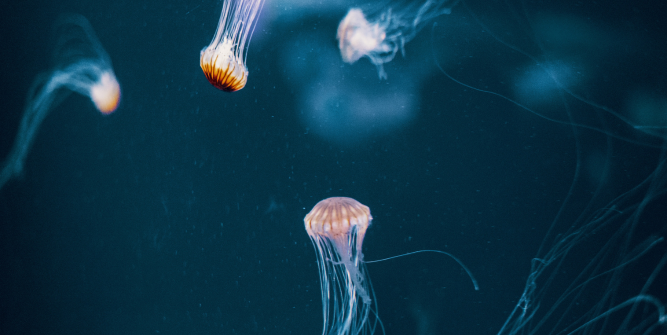
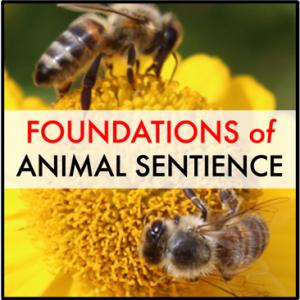
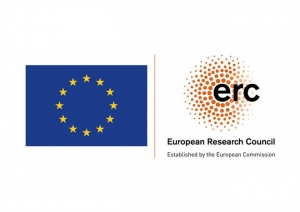





































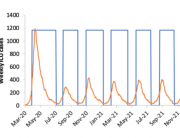
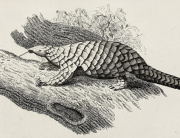


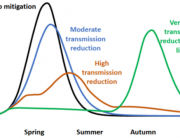
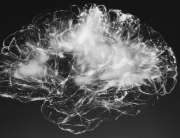



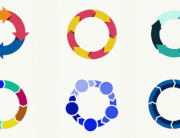
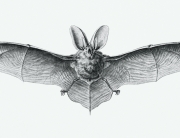
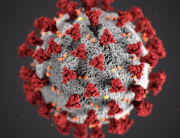

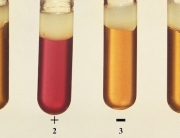










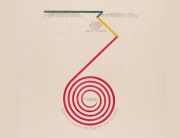






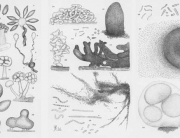



































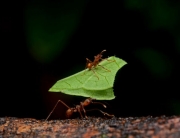















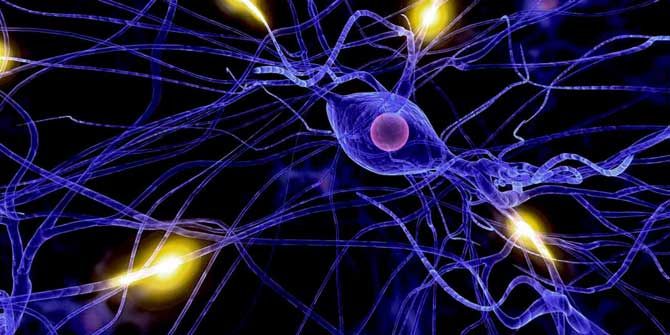
Very interesting article. I was surprised not to find any reference to consciousness in this article. My view is that consciousness is critical in this debate, because if given animal lacks subjective feeling of existing in the world and perceiving it, then even if it has pain mechanism and it is triggered, then it wouldn’t experience pain.